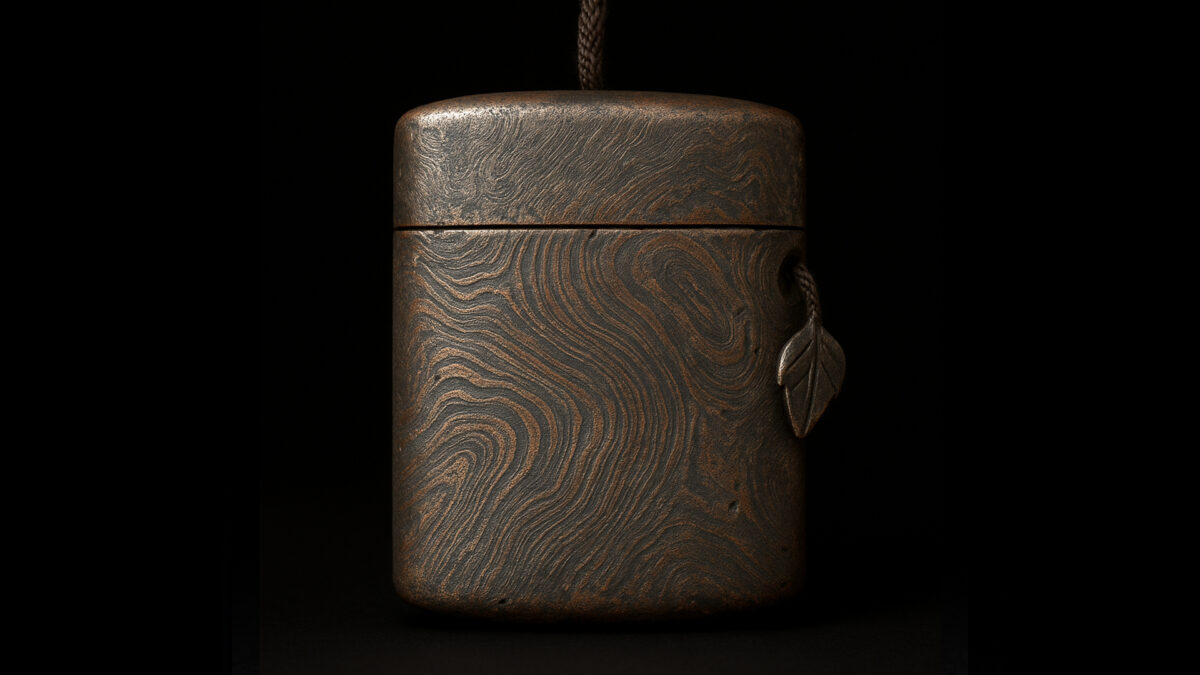- Secrets and Talking Points from a Mokume Gane Artisan:
- 7 Things You’ll Want to Share Once You Know
- 1. Mokume Gane Isn’t Damascus Steel—But They’re Distant Cousins
- 2. A Purely Japanese Innovation from the Edo Period
- 3. The Pattern Only Appears After the Metal is Carved
- 4. The Pattern Depends on Fire and Hammer—Like Cooking
- 5. Yes, the Patterns Have Names
- 6. Mokume Gane Can’t Be Mass-Produced—That’s Why It’s Valuable
- 7. Some Mokume Gane Rings Have Patterns on the Inside—A Hidden Mastery
- Final Thought: True Craft Is Something You Can Talk About
Secrets and Talking Points from a Mokume Gane Artisan:
7 Things You’ll Want to Share Once You Know
Here are seven hand-picked insights about Mokume Gane that are sure to impress your friends—or even spark a deeper appreciation the next time you see one.
1. Mokume Gane Isn’t Damascus Steel—But They’re Distant Cousins
We often hear, “Isn’t Mokume Gane just the same as Damascus steel?”
Not quite—but close.
- Damascus steel is primarily used for blades and weapons.
- Mokume Gane is a technique for decorative metalwork.
Both involve layering metals and revealing patterns through forging and grinding, but their materials, temperatures, and bonding mechanisms differ. Still, the structural elegance they share makes them creative relatives.
2. A Purely Japanese Innovation from the Edo Period
Mokume Gane was invented in the late 17th century by a master metalsmith named Shoami Denbei during Japan’s Edo period.
What’s fascinating is that no similar technique existed in the West at the time. It was a true Japanese innovation—an ultra-refined, secret art passed down only by word of mouth.
Think of it as Edo-period nanotech.
3. The Pattern Only Appears After the Metal is Carved
The beautiful pattern of Mokume Gane isn’t painted—it’s revealed.
Only after carving into the laminated block of metals do the layers emerge. In physics terms, it’s called selective exposure of interfacial structures—you’re literally revealing the hidden “grain” between metals.
Mokume Gane is part sculpture, part science.
4. The Pattern Depends on Fire and Hammer—Like Cooking
Just like searing the perfect steak or slicing sashimi just right, fire control and hammer rhythm are critical to Mokume Gane.
Too much heat? The metals blur and melt.
Too little? They won’t bond.
It’s an intimate dance between fire and metal—pure romance, really.
5. Yes, the Patterns Have Names
Different pattern types have traditional names borrowed from woodworking vocabulary:
- Uzumoku (Swirl): Spiraling like tree rings or whirlpools
- Masame (Straight grain): Clean, parallel lines
- Tamamoku (Knot): Irregular, rounded, dotted forms
This is because Mokume Gane was originally inspired by wood grain, aiming to re-create nature’s patterns in metal. A poetic endeavor.
6. Mokume Gane Can’t Be Mass-Produced—That’s Why It’s Valuable
Even with the same materials and process, you’ll never get the same pattern twice.
In physics, it’s similar to a chaotic system, where small initial differences produce drastically different outcomes.
This unpredictability is not a flaw—it’s the essence of handmade artistry.
7. Some Mokume Gane Rings Have Patterns on the Inside—A Hidden Mastery
Here’s a secret even experts often miss:
Some Mokume Gane rings continue the pattern all the way inside the band.
It’s an incredibly difficult feat—only a handful of artisans in Japan can pull it off.
Why? Because it requires perfect fusion, flawless depth control, and precise carving from every angle.
To the untrained eye, it may look simple—but turn the ring over and say,
“The pattern goes all the way through.”
You’ll instantly become the most interesting person at the table.
Final Thought: True Craft Is Something You Can Talk About
The real charm of Mokume Gane isn’t just its beauty—it’s its story.
- Who made it?
- Why does it look this way?
- Why is it never the same twice?
Once you know even a little, you start to see craft as more than art—it becomes a shared language.
So next time you spot a piece of Mokume Gane, tuck one of these little gems in your pocket—and share it with someone.
Congratulations.
You’re now officially part of the Mokume Gane Storyteller’s Guild.

